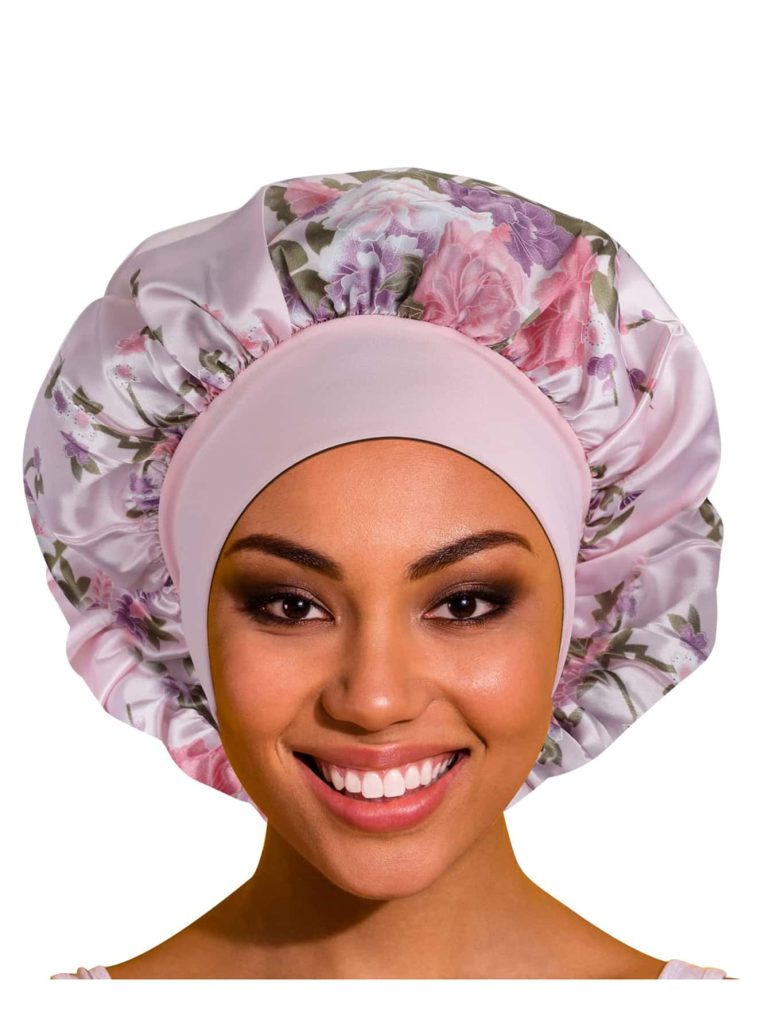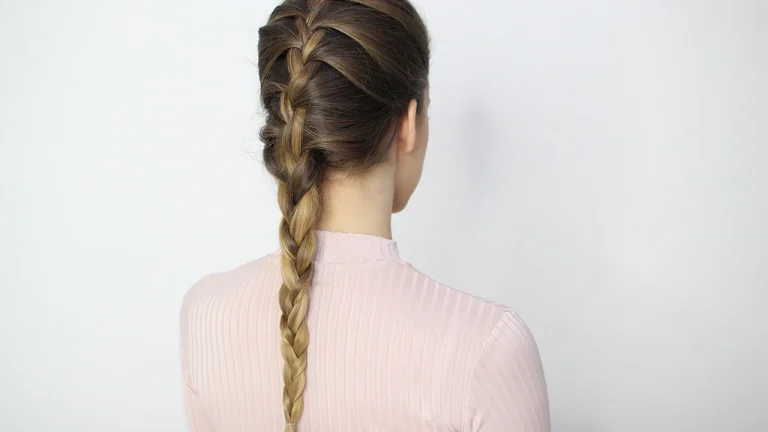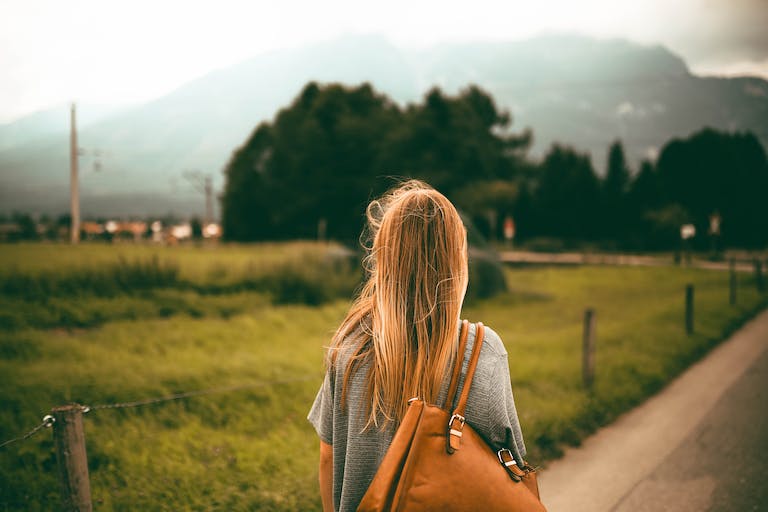Can you wear a bonnet with wet hair?
Yes, you can wear a bonnet with wet hair. Bonnets are often made from silk or satin materials that are gentle on the hair and help retain moisture. Wearing a bonnet while your hair is wet can help reduce frizz, prevent splits and breakage, and keep your style looking fresh.
In this guide, I will discuss whether you can wear a bonnet with wet hair or not. I have also included some bonus tips and FAQs. Let’s start with the basics.
What is a Bonnet?
Contents
- What is a Bonnet?
- Benefits of Wearing a Bonnet on Wet Hair
- Can You Wear a Bonnet With Very Wet Hair?
- Tips for Wearing a Bonnet on Wet Hair
- Alternatives to Silk Bonnets for Wet Hair
- FAQs
- Can you wear a bonnet with wet curly hair?
- Should you wear a bonnet with wet or dry hair?
- Can you sleep in a bonnet with wet hair?
- Can you put wet hair in a bonnet overnight?
- Why wear a bonnet to bed?
- How to wear a bonnet?
- How to use a bonnet?
- What is a boonie hat?
- What causes bonnet hair?
- Can hairstyle cause headaches?
- Should you wear bonnets for afro hair?
- What are bonnet alternatives?
- What does it mean to “sleep in a bonnet”?
- Should you wear a bonnet with wet hair everyday?
- Is it ok to wear a bonnet with wet gel hair?
- The Takeaway
A bonnet is a cloth covering worn on the head, usually while sleeping. Today, women with curly or kinky hair typically wear bonnets to preserve hairstyles and moisture overnight. The soft fabrics envelope the hair, keeping it from rubbing against pillowcases. This preserves styling and moisture.
Traditional bonnets tie under the chin, but modern versions may have elastic bands to fit snugly around the head. Bonnets come in silk, satin, lace, cotton blends, and more. Silk and satin bonnets are recommended for wet hair, as they slip and are less absorbent. The smooth texture causes less friction and disruption of hair cuticles.
Benefits of Wearing a Bonnet on Wet Hair
Wearing a bonnet while your hair is wet, especially overnight, provides multiple benefits:
Preserves Moisture
Leaving hair uncovered overnight allows moisture to evaporate. This leads to dry, brittle hair prone to breakage. Bonnets form a breathable barrier that locks in moisture. The hair stays hydrated and springy.
Silk and satin bonnets are best as they don’t absorb much moisture. Cotton soaks up water, causing hair to dry out. Lean towards slippery fabrics when hair is drenched for best effects.
Reduces Frizz
When wet hair rubs against pillowcases, it causes frizz. The friction lifts the hair cuticle, allowing moisture to escape. This leads to dry, frizzy strands by morning.
Wearing a bonnet provides a smooth, silky barrier between your hair and bedding. This prevents ruffling and frizz so you wake up with sleek, defined hair.
Prevents Hygral Fatigue
Wetting and drying hair repeatedly causes hygral fatigue. This is damage to hair fibers from the swelling and shrinking during moisture changes. It leads to splits, dullness, and brittleness over time.
Locking in moisture overnight with a bonnet provides consistent hydration. This reduces the degree of shrinking and swelling hair undergoes, minimizing fatigue.
Maintains Style Definition
Rubbing wet hair against your pillow smears product, distorts curls, and wrecks style definition. The friction between hair and fabric causes curl patterns to loosen and go frizzy.
Keeping hair protected in a bonnet maintains product distribution and curl formation. Hairstyles keep their spring and definition instead of going flat and fuzzy.
Prevents Breakage
Wet hair is in a vulnerable state, prone to snapping and tangling, which causes breakage. Using a soft, silky bonnet shields strands while drying. This prevents tangles and preserves the integrity of the hair, so it resists breakage.

Can You Wear a Bonnet With Very Wet Hair?
There is some debate over whether you should put a bonnet on sopping wet hair or let it air dry a bit first. Very wet hair increases concerns about hygral fatigue and potential breakage issues.
Some experts advise waiting until hair is about 80-90% dry before covering with a bonnet. At this damp stage, it retains some moisture but puts less strain on strands.
However, wearing a bonnet even on dripping hair is generally fine. The key is using a slippery silk or satin material that won’t cling and cause friction or pressure. And removing the bonnet once hair is fully dry alsominimizes risks.
As long as your bonnet fits loosely and makes hair feel comfortable, wearing it on any level of wetness is okay. Pay attention to hair signals – if it feels tugged or strained, take the bonnet off.
Tips for Wearing a Bonnet on Wet Hair
Follow these tips to safely wear a bonnet on wet hair:
- Choose silk or satin bonnets rather than cotton blends which absorb more water. Slick fabrics provide less friction.
- Make sure bonnets are roomy enough to avoid tightly pulling on hair when tied. Snug is fine, tight is not.
- If hair is freshly washed and dripping, gently squeeze out excess moisture with a t-shirt before putting on a bonnet.
- Periodically check under bonnets to ensure hair is drying properly and not staying overly damp.
- Always remove bonnets once hair is fully air dried to prevent moisture buildup on scalp.
- Use loose hairstyles inside bonnets rather than tight braids or bands which could snap wet hair.
- Apply leave-in conditioner before covering wet hair to provide extra protection against friction.
- Use caution when wearing bonnets on wet hair outdoors in cold climates. The temperature change could cause breakage.
Alternatives to Silk Bonnets for Wet Hair
While silk and satin bonnets are ideal for retaining moisture in wet hair, other options can also work:
Silk or Satin Scarf
Wrapping hair in a silk or satin scarf mimics the smooth, friction-free environment of a bonnet. Square scarves can fully envelope hair while still allowing airflow.
Silk or Satin Pillowcases
Using slick pillowcases provides similar protective benefits during sleep. The smooth fabric glides over hair, preventing disruption of styles and moisture.
Shower Cap or Plastic Cap
These create barrier while introducing heat buildup risks. Best used short-term while finishing getting ready before a bonnet or scarf.
Cotton T-Shirt
A soft cotton t-shirt makes a decent bonnet substitute. Fold and tie it to loosely cover wet hair through the initial drying phase.
FAQs
Can you wear a bonnet with wet curly hair?
Yes, bonnets are highly recommended for wet curly hair. The smooth fabric helps maintain curl formation as hair dries by preventing frizz.
Should you wear a bonnet with wet or dry hair?
You can wear a bonnet with either, but wet hair has more benefits. Covering wet strands preserves moisture, which is crucial for definition and reducing breakage in curly styles.
Can you sleep in a bonnet with wet hair?
Yes, sleeping in a bonnet with wet hair is safe and provides great overnight protection. Silk or satin bonnets prevent moisture loss and friction during sleep so hair stays hydrated.
Can you put wet hair in a bonnet overnight?
It’s perfectly fine to put wet hair in a bonnet overnight. Make sure it fits comfortably without tightness or pressure. Remove the bonnet in the morning once hair is completely dry.
Why wear a bonnet to bed?
Wearing a bonnet to bed when hair is wet protects moisture levels, prevents tangles/breakage, maintains style definition for curly hair, and prevents frizz by eliminating friction with pillowcases.
How to wear a bonnet?
To wear a traditional tie bonnet properly:
- Center the bonnet on your head with the ties facing down
- Tie the bottom ties securely but not tightly under your chin
- Let the top part of the bonnet drape loosely over your hair
- For wet hair, focus on using slippery silk or satin bonnets
For modern elastic band bonnets:
- Pull the bonnet over your hair so the elastic band sits around the perimeter of your head
- Adjust the band to be snug but not tight
- Make sure the fabric lays gently on hair without strain
How to use a bonnet?
- Bonnets are primarily used to protect hair while sleeping and retain moisture. They can also be used briefly to shield wet hair while styling or showering.
- Ensure bonnets fully cover all strands, enveloping hair smoothly without pressure.
- Allow hair room to breathe rather than wrapping excessively tightly.
- Use bonnets made from silk or satin for best slip with wet hair. Cotton blends become absorbent.
- Remove bonnets as soon as hair is fully dry to prevent moisture buildup.
What is a boonie hat?
A boonie hat is a wide-brimmed cotton hat typically worn for sun protection outdoors. The flexible brims and chin drawstrings secure it in windy conditions. While functional for shade and coverage outside, a boonie hat does not provide the moisturizing benefits a silk bonnet offers for wet hair.
What causes bonnet hair?
Wearing bonnets too frequently or for prolonged periods can lead to bonnet hair – flattened, misshapen hairstyles from the pressure of fabric. Prevent this by allowing hair room inside bonnets rather than wrapping tightly and removing after drying is complete.
Can hairstyle cause headaches?
Yes, some hairstyles that tightly pull on the hair can contribute to tension headaches. Heavy braids, high ponies, and too-tight bonnets frequently prompt pain signals from the scalp due to strain on hair follicles. Choose loose, low-tension styles instead.
Should you wear bonnets for afro hair?
Absolutely! Bonnet use is highly recommended for afro hair types prone to dryness. Silk and satin provide a non-disruptive protective layer that seals in moisture as dense, kinky hair dries. This results in better defined curls versus rough pillow friction.
What are bonnet alternatives?
Silk scarves, silk pillowcases, shower caps, plastic conditioning caps, cotton t-shirts, and loosely wrapped towels make decent temporary bonnet substitutes when in a pinch. But for the best long-term hair protection with retained moisture, silk and satin bonnets win.
What does it mean to “sleep in a bonnet”?
Sleeping in a bonnet refers to wearing a bonnet cover over your hair while sleeping. This protects hair texture and moisture overnight—vital functions for wake-up style and health, especially for dry or curly hair types prone to frizz.
Should you wear a bonnet with wet hair everyday?
Wearing bonnets daily is fine, but it is best to allow occasional breathing periods. If covering wet hair nightly with bonnets, give the hair a break 1-2 nights per week. This ensures moisture doesn’t become overtrapped against the scalp or impede drying.
Is it ok to wear a bonnet with wet gel hair?
Most hair gels contain lots of alcohol and chemicals that can be drying to the hair and irritating to the skin during extended contact. Allow gel to dry fully before applying a bonnet; wearing one too soon traps the products against the scalp.
The Takeaway
Wearing bonnets on wet hair provides multiple benefits, from preserving moisture to maintaining definition in curly styles. Stick to silk or satin materials for the best friction reduction. Make sure bonnets aren’t tightly fitted and the hair has room to breathe while drying.
Remove bonnets once hair is fully air dried and style as desired in the morning. Consistently covering wet strands prevents weathering damage over time for healthier, more vibrant hair.
So next wash day, when your hair is sopping wet, go ahead and pop on that silky bonnet! Your hair will thank you for it in the morning.

Founded by Sophia Rodriguez, IGXO Cosmetics is a PETA-certified, cruelty-free, and vegan makeup brand.





